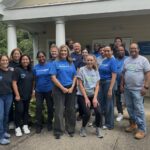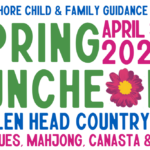By Andrew Malekoff Hurricane Sandy has shaken many of us to the core, shattering our sense of safety in the world. Helping children and adolescents to cope during this difficult time when many are struggling, is essential. Following are four interrelated and overlapping ideas to keep in mind in caring for young people impacted by disasters and other traumatic events. Provide protection, support, and safety. Children and youths need safe places to go, with worthwhile things to do and opportunities for belonging. And they need relationships with competent adults that understand and care about them. Living through a disaster like Hurricane Sandy can contribute to a pervasive sense of fearfulness, hypervigilance and despair. Do all you can to ensure a basic level of physical and emotional safety that helps to cultivate a sense of trust. Safe havens in school and the community are prerequisites for helping kids through this disaster. Help to re-establish connections and rebuild a sense of community. Collective trauma, according to Kai Erikson, is “a blow to tissues of social life that damages the bonds linking people together, and impairs the prevailing sense of communality.” The trauma of living through a disaster leads to demoralization, disorientation, and loss of connection. Hurricane Sandy has left individuals feeling unprotected and on their own. Connecting with others addresses the primary need of survivors to affiliate and can promote mutual support, reduce isolation, and normalize young (and older) peoples’ responses and reactions to what feels like a surreal situation. Don’t go it alone. Offer opportunities for action that represents triumph over the demoralization of helplessness and despair. “Talking about the trauma is rarely if ever enough,” advises noted trauma expert Bessel van der Kolk. Children and teens can be encouraged to write poetry, create artwork, engage in social action, volunteer to help other victims or any of the multitudes of creative solutions that individuals can find to confront even the most distressing troubles. Creatively engage your children to give them some control over what feels like and out-of-control situation. Actively endure. Louis Lowy was a World War II concentration-camp survivor. Although he rarely talked about his wartime experiences, his later career as a social work educator was infused with the time he was leader of the Deggendorf Displaced Persons Center. Lowy taught “active endurance,” which he described as “not merely enduring passively, but also learning to endure actively…substituting hope for despair, persevering rather than giving up, persisting rather than surrendering in the face of difficult odds, and helping to sustain ourselves [and those that we care about] through mutual support.” Parents can set this example for their children. If your capacity to actively endure and help your child to cope outstrips your ability to do so during this stressful time, contact your local community-based mental health agency. North Shore Child and Family Guidance Center is always ready to take your call at 626- 1971.
In The Media
Actively Enduring in the Aftermath of Hurricane Sandy
M
M














